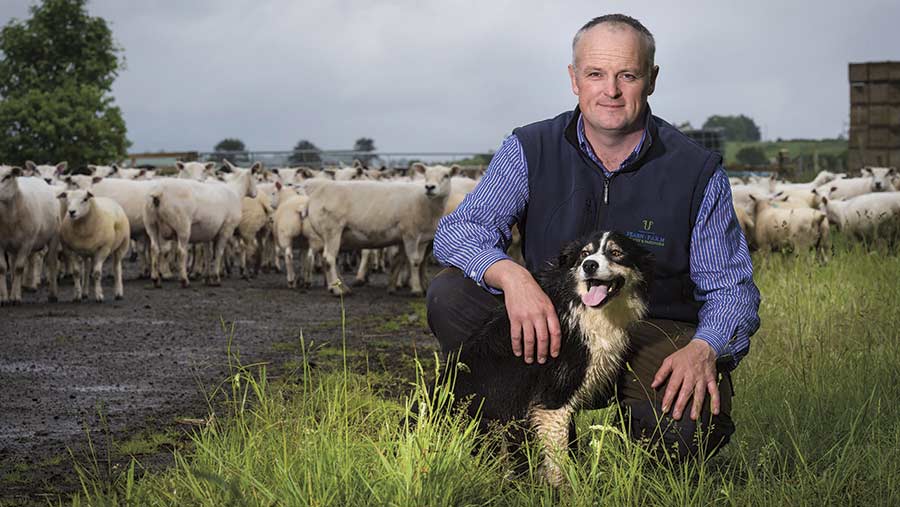Farmer Focus: Frustrations of campylobacter abortion
 © Jim Varney
© Jim Varney Lambing is now well and truly under way; those who know us well have learned to read the signs in order to establish how well things are going in the lambing shed or fields.
As the lambing season progresses I gradually become more dishevelled. Shaving is seen as an unnecessary luxury, my favourite jersey knows its way to the lambing shed whether I’m in it or not, and a trip to the nearest town is seen as a big day out even though it’s only five miles away.
See also: Read more of our Livestock Farmer Focus writers
Savvy sales reps email rather than call in, small children scatter when they hear the back door slam, and lambing students perfect the knack of departing through one door of the shed as I enter through another.
Abortion and feeding
Fields of gambolling lambs in lush green grass is the look that we are aiming for and following a kind spring (so far) that’s what we are achieving on the whole, albeit with a few hiccups along the way.
Campylobacter abortion coupled with below par management in our ewe hogget’s has been really frustrating. More than 10% have slipped lambs and, despite pledging to make a better job of them this year, we have let them down.
Mixed-age ewes have been performing well on the new regime of fodder beet, silage and grass. Trailing tonnes of feed daily into fields via snacker is something that I never want to go back to.
Twins have been lambed outside while singles and triplets have been housed to make the most of setting on opportunities. There’s no doubt we need to refine the variety of types we have in our crossbred flock, and selection will be strict this year when it comes to selecting ewe lambs who have been raised with minimal assistance and are easy fleshing.
Laborious calving
Calving has been fairly slow. Our AI’d cows (due 1 April) have been reluctant to produce calves for some reason and have been hanging on longer than I would have liked.
We’ve also had to assist with calving, possibly exacerbated by an easy winter coupled with more winter feed supplies, which may have made us a little generous with daily feed portions.
Hindsight is great but completely useless unless you act on it for next year; with this in mind we have detailed death analysis from the lambing shed, which is allowing us to track where we are going wrong.
This is reported at weekly team meetings that pinpoint weak areas so we can act immediately while planning ahead for next year.
Local rugby provides a welcome distraction at this time of year with the U15 team that James plays for making Caley finals day, after that all thoughts turn to NZ, can the Lions do it?
John and Fiona Scott farm 200 suckler cows, 4,500 breeding ewes as well as some crops across 2,226ha. He also has two contract farming operations and generates energy from a small-scale wind turbine and biomass boiler.
